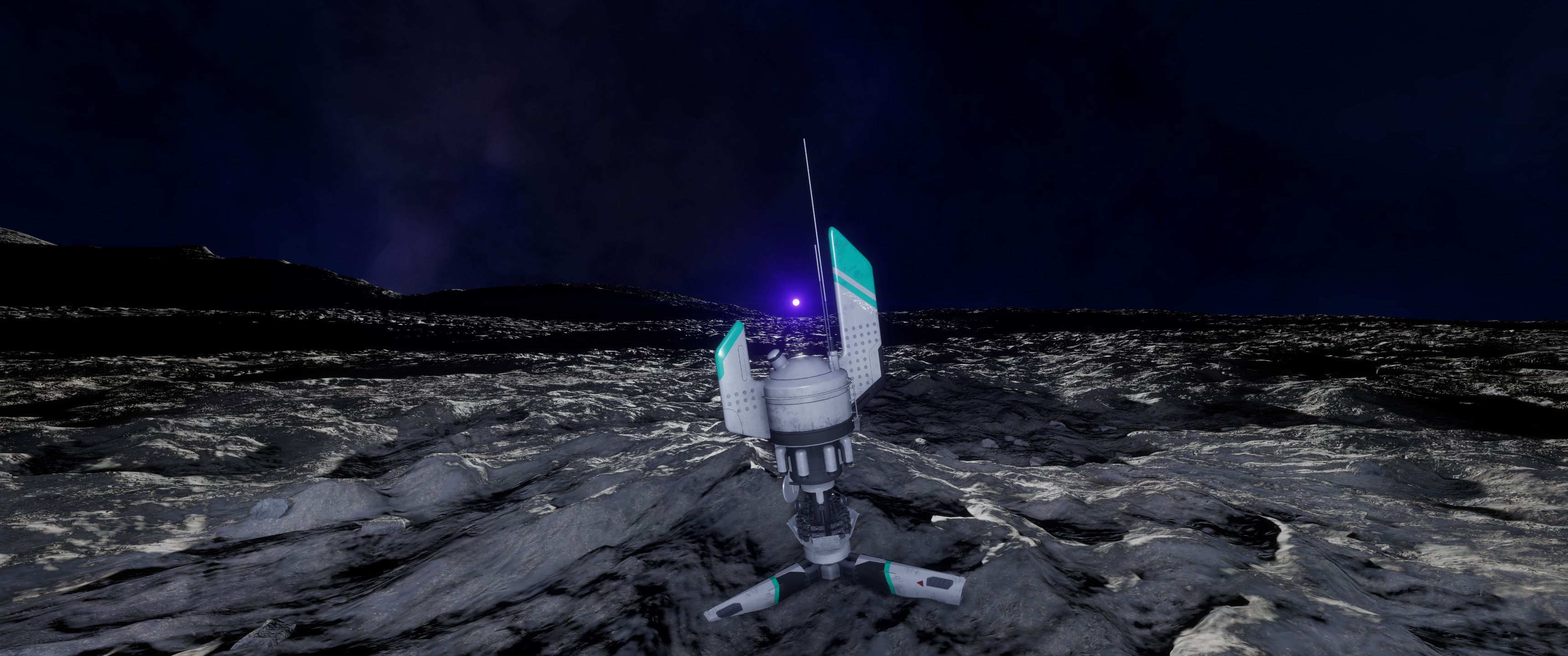

| Created: 2023-11-20 21:54:25 Last Edited: 2023-11-22 00:50:08 | |
| Submitted by: CMDR Marx ☀ on behalf of CMDR Alot | |
| Star System: | Hen 2-23 |
| Coordinates: | 8322.62 / 1271.03 / -1169.69 |
| Sol Distance: | 8,499.99 ly |
| Region: | Outer Orion Spur |
| Category: | Tourist Beacons |
| Category: | Nebulae |
|
| |
 | |
Summary: A planetary nebula around a Wolf-Rayet star, with a Tourist Beacon which was for some time an infamous destination, one that explorers would warn others about. | |
Notice: This POI shares the same star system with a prior existing entry in the Galactic Mapping Project (GMP). You can visit the original entry using the link below: | |
Description: NGC 2818, or Hen 2-23, is a planetary nebula around a Wolf-Rayet star, well above the galactic plane. It was named the Glorious Nebula, when Saud Kruger placed a Tourist Beacon on one of the moons here. Soon after, requests by passengers on mission boards appeared, among the many destinations on offer, this system got some special attention... as being notoriously difficult to reach at the time.
While the system is 8,500 ly away from Sol, it's 1,300 ly above the galactic plane, in an area somewhat sparse with stars. Before engineered Frame Shift Drives became available, the only way to reach this system was with synthesized boosts... and preferably not too many passenger cabins weighing the ship down.
Commanders who took on tourists used to think that because thus system is relatively close to Sol (when compared to many other destinations which were significantly farther away), taking missions here would be rather easy. As they neared their destination though, many of them realized too late that either they didn't have enough materials to synthesize the necessary boosts, or their ship's jump range was too low even when boosted. Thus, they had to turn back, their missions having been doomed to failure. Because of this, explorers soon warned other explorers not to take on passengers on long distance tours to the Glorious Nebula. As for the contents of this location: the system itself doesn't have many bodies left in it. Two brown dwarf stars orbit the main star, and a Class V Gas Giant orbits the first dwarf. It has two tiny Metal Rich moons of its own. It is the first one, body 1 a a, that houses the Tourist Beacon in this system.
However, one needn't drive or walk to the beacon, as they can scan it from above in their ship as well. This is the automated message that the beacon broadcasts:
Note that the message is mistaken, the system was discovered by CMDR Alot.
It's not possible to get a good view of the planetary from other systems close by, as the nearest one is 47 ly away. At that distance, it's rather difficult to make out the cloud.
| |
| ID64 Address: | 1528890492 |
| EDSM ID: | 2834375 |
EDSM Traffic Report
| Past Day: | |
| Past Week: | |
| Total: |
EDSM Estimated Value
| Scanned: | |
| Mapped: |
Nearest GEC Neighbors:
| POI Name | Distance | Rating | System |
|---|---|---|---|
| Equatorial Jewels | 1,228.77 | 4.22 | Pru Thae BF‑C c27‑1 |
| Blossoming Siblings | 3,944.65 | 4.47 | Blua Eoq JT‑A c1‑1 |
| Guardian Ruins ‑ Eta Carin... | 4,124.01 | 4.77 | Eta Carina Sector... |
| Eta Carina Amber Fields | 4,127.05 | 5.75 | Eta Carina Sector... |
| A Floofy Giant | 4,448.09 | 5.00 | Eafoff LN‑Q d6‑0 |
| Statue of Liberty nebula | 4,529.91 | 3.41 | Statue of Liberty... |
| Hussar Rock | 4,582.16 | 3.44 | Blua Eoq ZA‑L c9‑0 |
| Dueling Rings | 4,778.65 | 4.84 | Qiefaa EB‑U d4‑20 |
Nearest GMP Neighbors:
| POI Name | Distance | Rating | System |
|---|---|---|---|
| NGC 2818 | 0.01 | N/A | Hen 2‑23 |
| NGC 2792 | 906.64 | N/A | CD‑41 4893 |
| NGC 3293 Open Star Cluster | 3,623.52 | N/A | V405 Carinae |
| The Spiderweb | 3,624.88 | N/A | CPD‑57 3520 |
| Gludge Planetary Nebula | 3,651.50 | N/A | Gludge IS‑T e3‑0 |
| Eta Carinae | 3,877.69 | N/A | Eta Carinae |
| Trumpler 16 Cluster | 3,932.39 | N/A | Trumpler 16 HG 1462 |
| Depot 2452 | 3,951.60 | N/A | NGC 2452 Sector V... |
Carriers Last Seen in this System:
| Callsign | Name | Date |
|---|---|---|
| G0B‑BVM | uss Eventide | 2025‑10‑09 23:56:16 |
Revision History: